Einleitung
Benutze diese Anleitung zum Ersetzen der Festplatte in deinem Mac mini Ende 2014 (Festplatte allein oder mit Fusion Drive).
Diese Anleitung wurde mit einem Fusion Drive Mac mini erstellt. Wenn dein Mac mini nur eine Festplatte hat überspringe die Schritte mit der PCIe SSD und des Anschlusses.
Werkzeuge
Ersatzteile
-
-
Die Unterbodenabdeckung wird von drei geschraubten Clips gehalten.
-
Heble in der Nähe der Schrauben, nicht direkt über ihnen.
-
-
-
Entferne die folgenden TR6 Schrauben von der Antennenabdeckung:
-
Drei 4,1 mm Schrauben
-
Drei 1,9 mm Schrauben
-
-
-
Mit den I/O Anschlüssen zu dir gerichtet klappe die Abdeckung nach rechts, um den Zugang zum Antennenanschluss zu ermöglichen.
-
-
-
Hebe den Antennenstecker mit der Spitze eines Spatels gerade nach oben vom Sockel auf der Airport Karte.
-
-
-
Ziehe das Antennen-Kabel vorsichtig aus der Lücke zwischen Stromzufuhr und Gehäuse heraus.
-
-
-
Entferne die zwei 12 mm T6 Schrauben vom Lüfter.
-
Lockere die unverlierbare 27 mm T6 Schraube.
-
-
-
Hebe den Lüfter gerade nach oben, um die unverlierbare Schraube aus dem Logic Board zu lösen.
-
Ziehe den Lüfter von der SSD weg, bis du mühelos an den Lüfteranschluss kommst.
-
-
-
Trenne den Stecker des Lüfters mit der Spitze eines Spudgers von seinem Anschluss auf dem Logic Board.
-
-
-
Trenne mit dem flachen Ende eines Spudgers den Stecker des SATA-Kabels von seinem Anschluss auf dem Logic Board.
-
-
-
Hebe mit der Spitze eines Spudgers den Stecker des IR-Sensorkabels gerade nach oben von seinem Anschluss.
-
-
-
Entferne die beiden 2,6 mm T6 Schrauben, die die Abdeckung des PCIe SSD-Kabels befestigen.
-
-
-
Stecke das Mac Mini Logic Board Removal Tool in die zwei mit Rot gekennzeichneten Löcher. Gehe sicher, dass die Stäbe das Gehäuse unter der Platine berühren, bevor du fortfährst.
-
-
-
Ziehe das Werkzeug vorsichtig in Richtung des Panels mit den Anschlüssen. Dieses sollte nun zusammen mit der Platine langsam aus dem Gehäuse herausgeschoben werden.
-
Höre auf zu ziehen, wenn das Removal Tool an den vorderen Gehäuserahmen der Öffnung stößt.
-
-
-
Zum Entfernen empfiehlt sich eine Pinzette, es ist aber auch mit den Fingern möglich. Die Klammer sollte dazu von der AC-Buchse weggezogen werden und aus dem Mac Mini entfernt werden.
-
-
-
Um das Netzteil aus dem Gehäuse zu entfernen, setzt du am besten am AC-In-Stecker an, denn der wirkt wie ein Hebel.
-
Drehe den AC-In-Stecker um 90 Grad gegen den Uhrzeigersinn.
-
-
-
Schiebe die Stromversorgung aus dem Gehäuse und achte dabei darauf, dass keine Kabel sich verheddern oder hängen bleiben.
-
-
-
Entferne die 4 6.5mm T9 Schrauben (2 auf jeder Seite) die die Festplatte in der Halterung festhalten.
-
-
-
Ziehe das Flachbandkabel hoch und löse vorsichtig das schwarze Klebeband darunter ab. Es befestigt den SATA-Stecker an der Platine der Festplatte. Wenn das Klebeband nicht abgelöst wird, dann reißen die am Flachbandkabel angelöteten Kontakte fast sicher aus dem Stecker heraus, da der Stecker die Kontakte kaum festhält.
-
Ziehe den SATA-Stecker von der Festplatte ab.
-
Ziehe die beiden schwarzen quadratischen Klebepads (eines ist im Bild zu sehen) vorsichtig von den Ecken der Festplatte ab und klebe sie auf die gleichen Stellen an der neuen Festplatte.
-
Befolge die Schritte dieser Anleitung in umgekehrter Reihenfolge, um dein Gerät wieder zusammenzubauen.
220 Kommentare
Hello, the following hard drive goes on the Mac Mini ??
no problem. but if you can get a evo 850 or a pro for the 2014 is better
All in all, this was a fairly terrifying process, however this guide was a massive help! Thankyou!!
geeksix -
This is exactly the reason I purchased their tools. They offer these guides which have helped me save several of my computers and a couple of my phones over the years. The $70 was a small price to pay for the help and I love the tools.
Ordered kit which arrived very quickly from Germany to UK. Only problem with taking it apart was with the IR sensor was difficult to lift up and I ended up pulling the whole fitting off glued it back on but now have no working IR sensor or front light but everything else works fine. Swapped SLOW HDD for SSD and now my Mac MIni is flying.
Andrew -
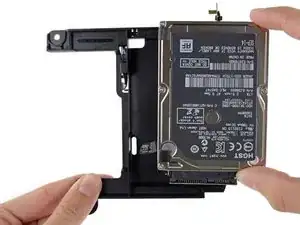
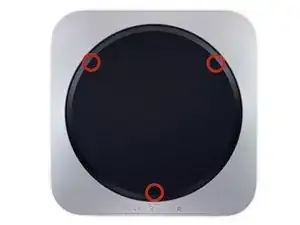

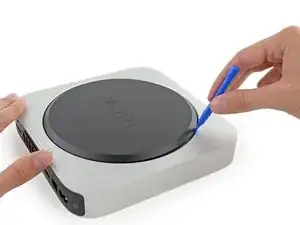
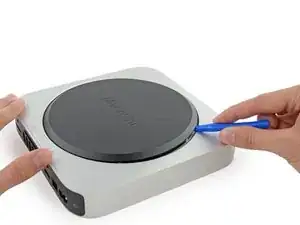
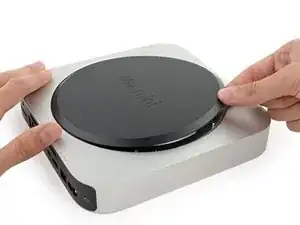
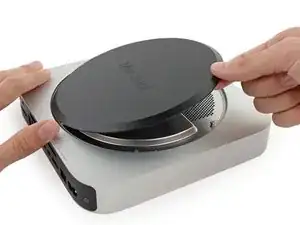
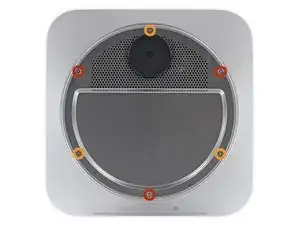
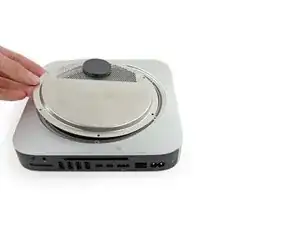
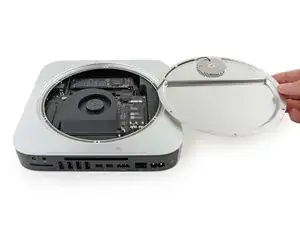
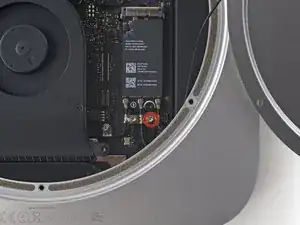
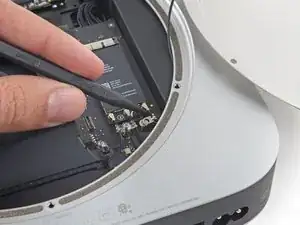
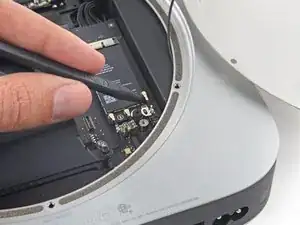
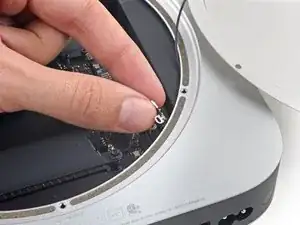
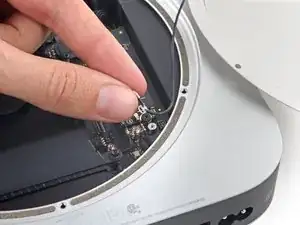
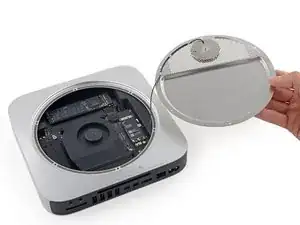
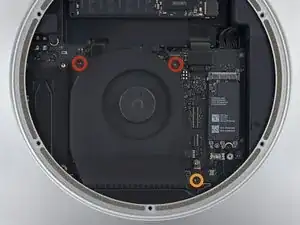
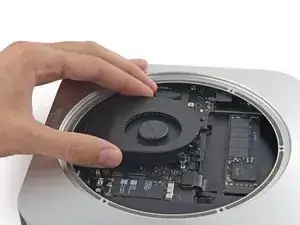
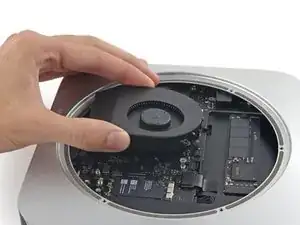
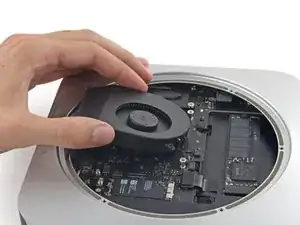
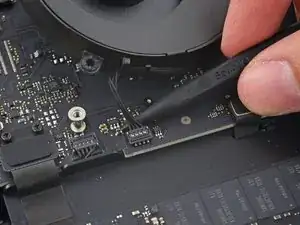
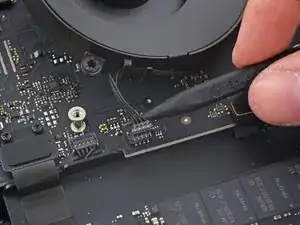
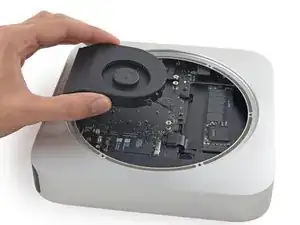
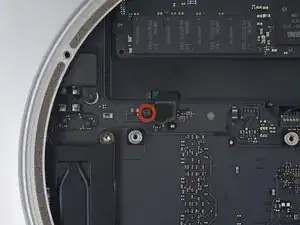
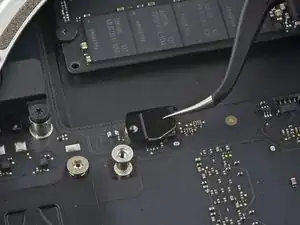
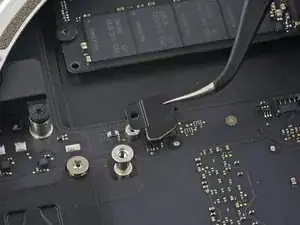
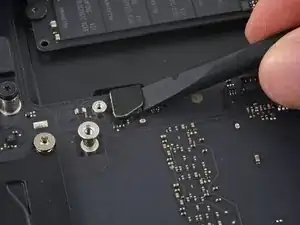
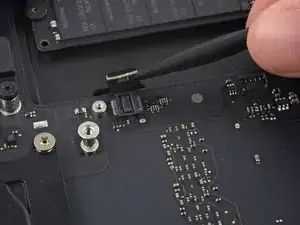

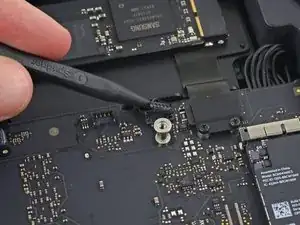
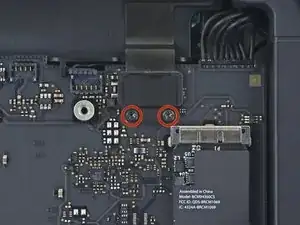
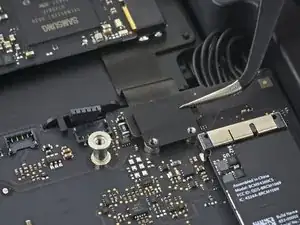

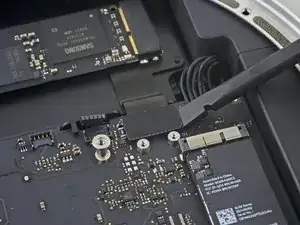

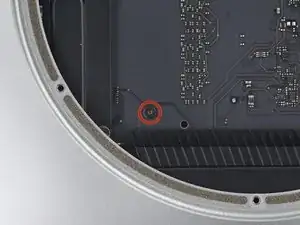
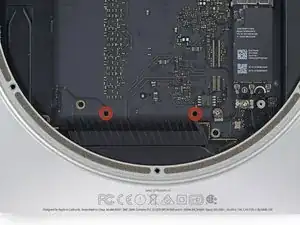
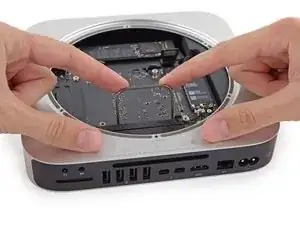
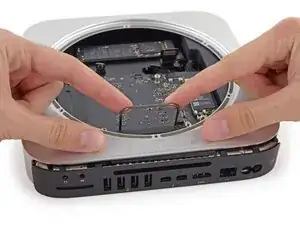
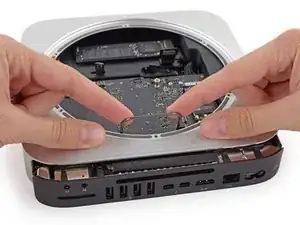
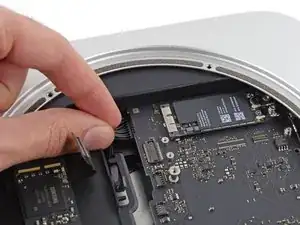
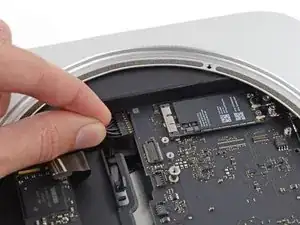
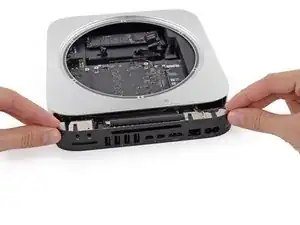
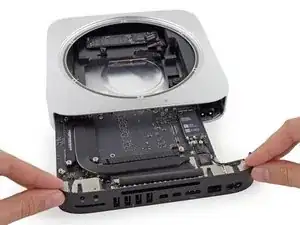
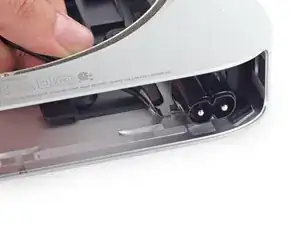
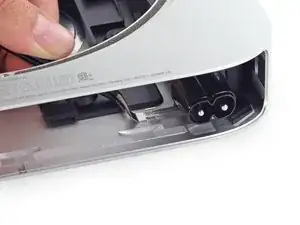
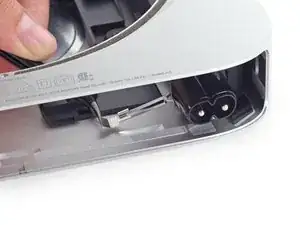
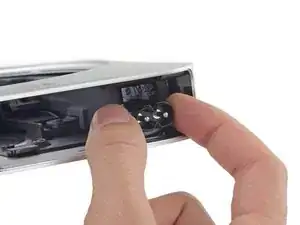

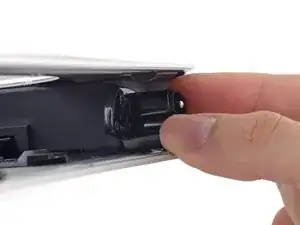
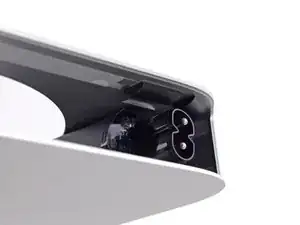
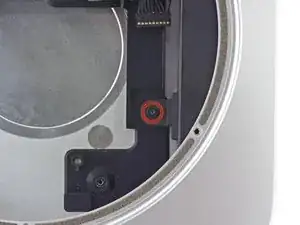
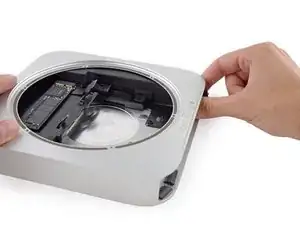
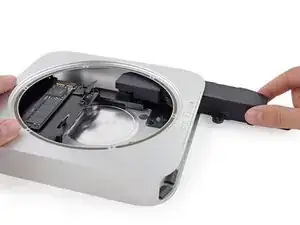
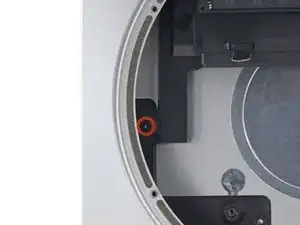
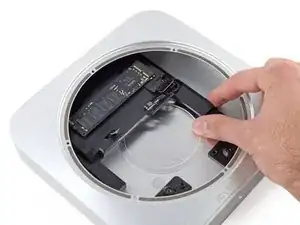
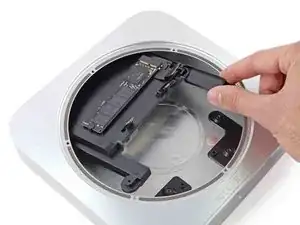
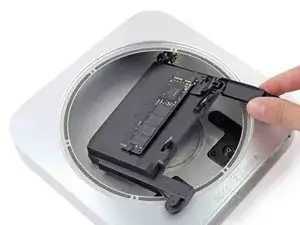
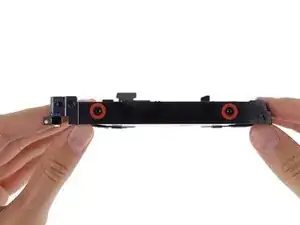
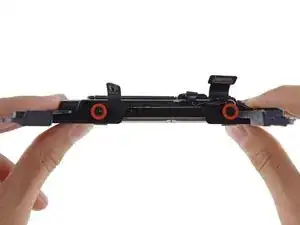
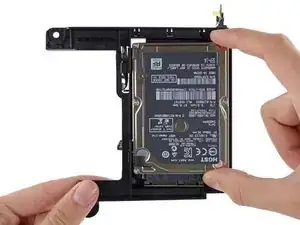
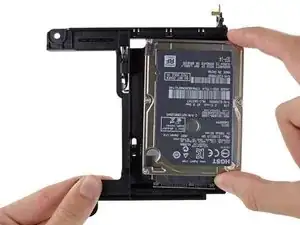
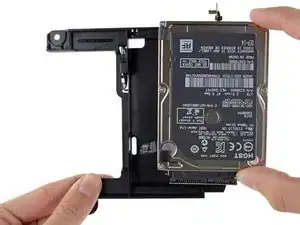
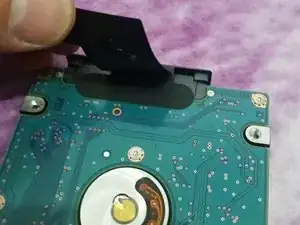
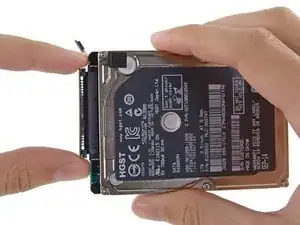
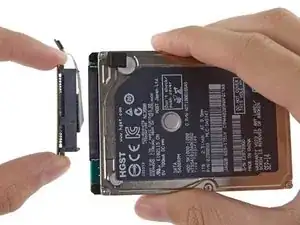

Read Me First: I purchased an SSD drive directly from Crucial and, of course, it came uninitialized. After going thru the entire tear down, installing the new drive, and rebuilding the mini, it refused to recognize the new drive. So, of course, I had to re-tear it down, remove the new drive, insert it into an external housing and format it using my Macbook. After that the mini recognized the new drive. A word to the wise: format the new drive before installing it.
tom -
How were you installing the OS? I am planning on booting into a USB drive with a copy of OS High Sierra on it, and I assume I will be able to format my new Samsung SSD using that?
Simon -
On my Samsung EVO 850, mac mini download system automaticly
Stefan Repac -
Pre-formatting is not necessary if you make a USB boot installation drive with macOS installer. During boot up, hold down the option key until the mac boot into the USB, formatting can then be done using disk utility running off the USB drive.
SBR249 -
I had the exact same experience as tom. I installed a brand new 2TB Samsung 850 EVO and it was not recognized by the Mac Mini. I booted from a portable USB drive with a bootable copy of macOS High Sierra but the 850 EVO SSD I had just installed was not shown as an option. I tore down the Mac Mini again, formatted the 850 EVO, rebuilt the Mac Mini, and booted off the same bootable High Sierra USB drive, and sure enough the 850 EVO was recognized.
maxim -
diskutil list
diskutil erasedisk [filesystem] [drivename] /dev/disk[disk number]
Paul Rodgers -
My drive (Evo 860) was also not initialized. I started in recovery mode and went to disc utility and from there selected the drive. I then was able to use the “erase” function on the drive. I just left the settings as default and as soon as it erased then the drive was ready to go.
Nathan Cooper -
Just completed this upgrade a few days ago, having purchased the 1 TB SSD kit from IFixIt. The kit arrived quickly and the tools and drive worked perfectly. The step by step guide posted here is pretty much flawless, but do pay attention to the specific comments from users on certain steps - they really help. As far as ensuring that the new drive will reboot and install MacOS, I watched 1-2 videos on YouTube about re-installing using the Internet Recovery tool and that worked perfectly. My MacMini is performing WAY better than it used to, for only a $200 upgrade kit and about 3 hours of work, all in. Thanks!
Joshua Rednik -
I’ve had Apple computers since the G3 machines and they have always been snappy.
Unfortunately this 2014 macmini has always been slow but this upgrade (6 years later) has changed that!
if you have a late 2014 macmini, do this.
I used a 860 Samsung.
Mike Hayes -
A quick comment to tell you that at every step, make sure to read the comments and be careful. I managed to do the process fast without any problems, but thanks to the comments that warned me enough on the risky steps.
Euronymous -
This guide surely helped me breath upgrade and bring some new life into my macmini. Thanks to all who contributed.
Cameron Hasell -
can one of you give me the link for the screw drivers please?
Gerardo Ramirez -